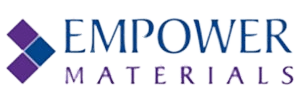Numerous research organizations have studied the use of QPAC®25 polyethylene carbonate (PEC) and QPAC®40 polypropylene carbonate (PPC) in solid lithium ion battery applications.
.jpg)
Image Credit: Shutterstock | Janaka Dharmasena
For several years, the main objective of ongoing research was to discover an alternative to liquid electrolyte batteries, which have inherent safety issues mostly due to the volatility and combustion of the liquid carbonate organic electrolyte.
Solid polymer electrolytes can also offer enhanced process ability and flexibility. Low ionic conductivity has been the issue with the past solid polymer electrolyte. An increased volume of work has been carried out to resolve this past concern so that the performance of solid lithium batteries is comparable to the liquid polymer batteries.
Polyalkylene Carbonate Polymers
Investigation of both QPAC®25 polyethylene carbonate and QPAC®40 polypropylene carbonate are being carried out as polymer candidates for electrolytes. Usually, carbonate-based solvents are used as the electrolyte solution in Li-ion batteries because of their high dielectric constant.
Hence, the carbonate groups of QPAC®40 and QPAC®25 provide a good structure for the polymer framework. The work shows that the PEC can form a high performing polymer matrix for the electrolyte and exhibits excellent ion conductive properties. Further work by other groups focused on PPC for the polymer matrix.
Properties of Polyalkylene Carbonate Polymers
Overall, the use of both QPAC®25 polyethylene carbonate and QPAC®40 polypropylene carbonate showed high ionic transference number and high conductivity in addition to enhanced mechanical strength.
The results show comparable performance to liquid electrolyte battery technology. Thus, the safety issues and flexibility constraints of liquid polymer batteries can be fully prevented without compromising performance by using these polyalkylene carbonate polymers in the electrolyte formulation.

This information has been sourced, reviewed and adapted from materials provided by Empower Materials.
For more information on this source, please visit Empower Materials.